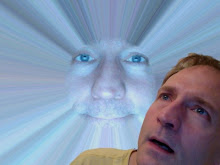Logical ways of doing things
8/28/2003
Throughout history, experts have developed a number of systems, often from the ground up, that are alternatives to the traditional way of doing things, and have the potential to become standards some day. Depending on your point of view, they might be more logical, efficient, easy-to-learn, or just plain cool, but have not yet been adopted, because the existing ways evolved first. Also, for many of us, since we have already learned the existing methods, it is perhaps too late to retool our habits from a practical standpoint.
1) The Metric System -- This one has been adopted by much of the world, but not particularly in the U.S., where inches, feet, yards, pounds, and gallons are still used. As you probably know, the metric system uses our base 10 numbering system (we have 10 fingers), and knowing the prefix, you can tell that a millimeter is 1000 times shorter than a meter, and a kilometer is 1000 times longer. The Metric System blends nicely with our Arabic numeral system, which replaced Roman numerals.
2) The Esperanto Language -- This spoken and written language was built from scratch over 100 years ago. It is designed to be politically neutral, and is said to be 4 to 10 times easier to learn than other languages. All nouns have the letter "o" in the suffix, and adjectives have the letter "a". To create a word that is the opposite, you just add "mal-" in front of it. For example, "bona" means good and "malbona" means bad. And to turn a statement into a question, you just put the word "cxu" (pronounced "choo") in front of it.
3) Quickhand -- This is easier to learn than conventional shorthand because it uses the English alphabet. (Not sure if there's an Esperanto version!) It uses consistent patterns for prefixes and suffixes, and short abbreviations for the most commonly used words. For example, a hyphen ("-") is used for the word "the", and the letter "j" is used in place of the suffix "-tion". Sometimes the same abbreviation is used for several different words, but you can tell which word it is by how it's used in the sentence.
4) The Dvorak keyboard for typing -- Ever wonder why the letters on your keyboard are scrambled (in the order QWERTY, etc.)? It's because the original typing machines were slow and the inventors wanted to give them a chance to keep up with the operators. Dvorak developed a keyboard where the most common letters (like ETOARSNL -- the ones you see a lot on "Wheel of Fortune") are placed on keys nearest your strongest fingers. This would be more efficient if you were learning it for the first time, but may cause some anguish to relearn.
5) Piano Roll representation of music -- In this system, written music is displayed in a graph format, on a grid, where time, in beats, is displayed along the horizontal axis, and pitch, in half-steps, is displayed along the vertical. Everything is displayed in proportion to how it is heard, and there is no need for sharps, flats, or key signatures. Most musicians are trained in the traditional system, and what system they use is a matter of personal preference. Fortunately, modern computer software offers both methods and can convert from one to the other.
6) Harry Lorainne Memory System -- This standard can be adopted on a personal level, but it's hard to say how widespread it is used. It uses illogical imagery to remember lists, numbers, names, faces, etc. For example, to remember numbers, a phonetic sound is associated with each digit. The sounds can be chained together to form words, such as "tot", "tin", and "tomb" for the numbers 11, 12, and 13. Words can be chained together to form lists. This is done by creating crazy, illogical images like a fish sitting in a chair. To remember names and words from foreign languages, you can do a "sounds-like", like in the game "Pictionary", to get a word that has an image. For example, "June bug" for the city of "Juneau".
7) The Linux Operating System -- This one may be more controversial, but it is generally agreed that this computer operating system takes up less disk space than the more popular Microsoft Windows. This leads one to believe that the code is probably cleaner and more concise. Developers who use it claim that it is more logically organized, and all agree that the program code is not hidden from view, as it is with Windows. Still, Linux has a little further to go in terms of features and ease of use for new users.

